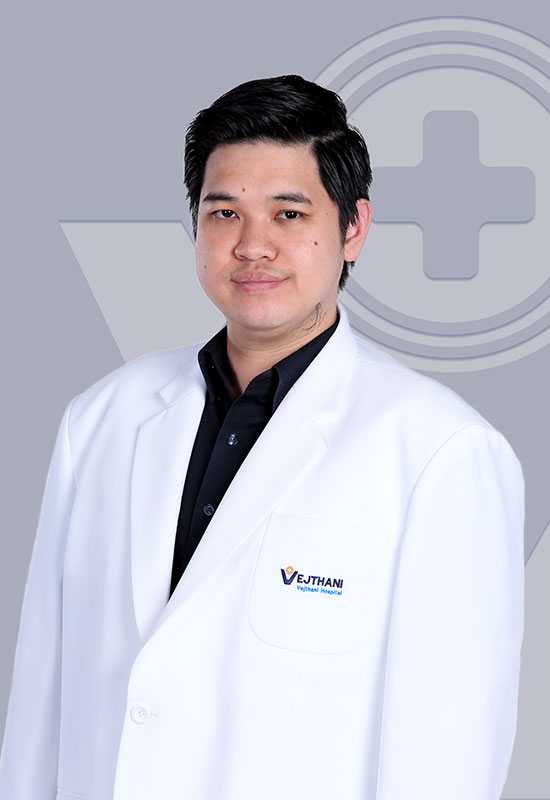
Customer Voice
Polysomnography: Sleep Test to Identify Sleep Disorders
Khun Dujdao Rungthanawong, the mother of Nong Em or Natthachai Rungthanawong is concerned about her son’s sleeping troubles that affecs his daily life. She decided to take her son to receive Polysomnography or Sleep Test at Vejthani Hospital to figure out the causes of his sleeping problems and the solutions to bring back his quality of life.
“Nong Em is now 10 years old, study in 4th grade. His weight is 85.8 kilograms. He had a hard time sleeping at night, snoring and loudly breathing, falling asleep during classes and exams. I was wondering if it could be the effects of overweight or other problems, I wanted to find the actual causes which are the key to proper treatment.”




Choosing the Right Sleep Test
“Initially I was searching the information about sleep test. The test is a painless procedure that records what happens to the body during sleep to find out what is causing my son sleep problems.
Preparing for Sleep Test
“The preparation for sleep test is not complicated. The doctor just asked to follow the regular routine as much as possible, avoid napping, take a shower or a bath and wash the hair before coming to the hospital. When it is time to go to bed, the sleep technician will attach sensors to my son’s body to monitor while he sleep.” Khun Dujdao said.
Dr. Chula Kooanantkul, Pediatric Pulmonologist at Vejthani Hospital, has informed about Polysomnography, also known as Sleep Test that is an overnight sleep study used to diagnose sleep disorders, especially Obstructive Sleep Apnea (OSA). Polysomnography records several body functions during sleep, including brain waves, oxygen level in blood, heart rate and rhythm, breathing rate, snoring, as well as body muscle movements.
The different of sleep test between children and adult
“Performing a sleep test on a child is exactly the same as conducting a test on an adult. But the normal rate of breathing for children is different from adult, so the sleep technician should specializes in the care of children.”
Testing Procedures
“Parents should bring their child to the doctor once before receiving the test, to diagnose the level of sleep problems, review the medical history, and examine for signs of comorbidities e.g. obesity and allergic diseases. Then the doctor will recommend a sleep study if he or she suspects your child have sleep disorder. ”
“On the day of the sleep test, the sleep technician will attach sensors to the body in the evening and begin the recording during sleep. In the morning the sleep technician will remove the sensors and review the results to determine what kind of sleep problem you may have.”
Sleep Test Complications
“Sleep Test is a painless test. Complications are rare. The most common side effect is skin irritation caused by the adhesive or glue used to attach test sensors to the skin. It will go away on their own within the next few days”
Diagnostic Sleep Study Report
“The results of the diagnostic sleep test indicate that Nong Em has slightly breathing and stop breathing during sleep 3-4 times/hour. For this case, it isn’t a serious condition but may require follow-up to reinforce good sleep. The main cause of his sleep problem is a combination of being overweight and allergies. We also found that his tonsils and adenoids are enlarged but the surgery does not require.”
“I recommended him to change his eating habits and improve physical activity habits to maintain his weight and receive treatment for his allergies. If left untreated it can be serious and lead to high blood pressure and the metabolic syndrome.” Dr.Chula said.
Nong Em or Natthachai Rungthanawong, told about his experience after received the sleep test at Vejthani Hospital that “I had a good night’s sleep and didn’t feel the pain during the test. The doctor told me that being overweight related to my sleep problems and suggested me to change my eating habits and get more exercise. I’ll make it possible, please support me.”
























